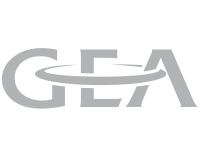|
**Haftungsausschluss: Der Text wurde mit Hilfe einer KI zusammengefasst und übersetzt. Für Aussagen aus dem Originaltext wird keine Haftung übernommen!**
**Zusammenfassung der Marktanalyse – Globale Milchvieh-Management-Markt**
Die Custom Market Insights-Studie prognostiziert ein deutliches Wachstum auf dem globalen Markt für Milchvieh-Management. Im Jahr 2024 wurde der Markt mit etwa 5,17 Milliarden US-Dollar bewertet, und es wird erwartet, dass er im Jahr 2025 5,76 Milliarden US-Dollar erreichen wird. Der Markt wird voraussichtlich bis 2034 auf rund 15,23 Milliarden US-Dollar wachsen, angetrieben durch eine durchschnittliche jährliche Wachstumsrate (CAGR) von 11,37 % zwischen 2025 und 2034. Dieses Wachstum wird durch das zunehmende Bewusstsein für die Tiergesundheit, die Notwendigkeit zur Optimierung der Produktivität und unterstützende staatliche Initiativen zur Förderung von Smart-Dairy-Farming-Technologien und Präzisionslandwirtschaft vorangetrieben.
**Wichtige Wachstumstreiber und Trends:**
* **Automatisierung ist zentral:** Automatisierte Milchmanagement-Systeme sind der Haupttreiber für das Wachstum. Diese Systeme rationalisieren den Betrieb, verbessern die Produktivität, reduzieren die Arbeitskosten und ermöglichen die Echtzeitüberwachung der Tiergesundheit und fördern eine proaktive Verwaltung. Die Integration mit IoT-fähigen Geräten und die Skalierbarkeit auf modernen Milchbetrieben sind entscheidende Faktoren.
* **Wachstum des Milchgewinnsektors:** Die zunehmende Einführung von Milchtischen und Milchrobotern – die höhere Qualität von Milchgütern liefern, die Arbeitsabhängigkeit reduzieren und die Milcharbeit verbessern – trägt wesentlich zum Marktwachstum bei.
* **Zunehmende Herdengrößen und Sensortechnologie:** Größere Herden zusammen mit Fortschritten in automatisierten Milchtischen und der Einbindung von Sensoren für die Echtzeit-Milchgüter steigern die Effizienz weiter.
**Marktsegmentierung:**
Der Markt ist nach folgenden Segmenten unterteilt:
* **Art:** Milchmanagementsysteme, Futter-/Nährungsmanagement-Systeme, Tierabfallmanagementsysteme, Zuchtmanagement.
* **Endnutzung:** Klein-, mittel- und Kooperativen Milchbetriebe.
* **Region:** Nordamerika, Europa, Asien-Pazifik (mit besonderem Schwerpunkt auf Indien und China), Naher Osten und Afrika, Süd- und Zentralamerika.
**Wichtige Akteure:**
Zu den in der Branche tätigen Unternehmen gehören DeLaval, Merck & Co. Inc., Afimik Ltd., BouMatic, GEA Group Aktiengesellschaft, Fullwood JOZ, DAIRYMASTER, Lely, SUM-IT, Pearson Milking Technology, Waikato Milking Systems NZ LP, AB Agri Ltd., Hokofarm Group, Alta Genetics Inc. und Moocall.
**SWOT-Analyse-Highlights:**
* **Stärken:** Steigende Nachfrage nach Milchprodukten sowie Alternativen bieten eine robuste Marktbasis. Niedrigere Produktionskosten schaffen Exportmöglichkeiten für Milch- und Milchprodukte. Es werden erhebliche Ressourcen für Forschungs- und Entwicklungsaktivitäten bereitgestellt. Staatliche Richtlinien und Unterstützung fördern das Wachstum.
* **Schwächen:** Regionale Unterschiede in der Tierproduktivität, saisonale Milchproduktion und Infrastrukturdefizite in Schwellenländern.
* **Chancen:** Die Implementierung von Herdwirtschaftssoftware kann Entscheidungen verbessern und die Effizienz steigern. Verbesserte tierärztliche Versorgung und Tiergenetik können die Milchqualität und -erträge erhöhen. Die Diversifizierung in Mehrwert-Milchprodukte kann die Rentabilität steigern. Die Verwendung von Milchviehmanagement-Systemen für Milchalternativen eröffnet neue Möglichkeiten für Forschungs- und Entwicklungsaktivitäten und Investitionen.
* **Gefahren:** Naturkatastrophen stellen ein Risiko für die Milchviehwirtschaft dar. Wettbewerb durch inländische und Milchwirtschaftliche Unternehmen stellt eine erhebliche Bedrohung dar. Bedenken hinsichtlich der Qualität des rohen Milchs und der Fälschung sind ein großes Problem.
Ich hoffe, diese Zusammenfassung und Übersetzung sind hilfreich! |
|
**Haftungsausschluss: Der Text wurde mit Hilfe einer KI zusammengefasst und übersetzt. Für Aussagen aus dem Originaltext wird keine Haftung übernommen!**
**Zusammenfassung**
GEA Group AG (GEAGF) hat im Q3 2025 eine starke Performance erzielt, die positive Dynamik für das Unternehmen signalisiert. Zu den wichtigsten Highlights gehörte ein Anstieg des Jahresumsatzes um 5,5 % (auf 1,372 Milliarden Euro), ein organischer Umsatzwachstum von 4,5 % und eine Rekord-EBITDA-Marge von 17,0 % (vor Restrukturierungskosten). Diese Zahlen deuten auf eine verbesserte operative Effizienz und einegeordnete Marktnachfrage hin. Das ehrgeizige „Mission 30“-Programm, das darauf abzielt, bis 2030 100 Millionen Euro Einsparungen zu erzielen, scheint Anklang zu finden.
Allerdings wurden auch einige Bedenken geäußert. Die komplexe Matrixorganisation stellt weiterhin eine Herausforderung dar, was zur jüngsten Auflösung des Global Executive Committee und zur Eliminierung regionaler Matrixstrukturen führte. Diese Neuausrichtung soll die Komplexität und Kosten reduzieren, aber sie führte auch zu einem Rückgang der Netto-Liquidität (um 102 Millionen Euro). Der organische Rückgang der Auftragseingänge für die Bereiche Liquid und Powder Technologies (6,8 %) und Heating and Refrigeration Technologies (7,1 %) stellen potenzielle Risiken dar.
Der Free Cash Flow wurde durch höhere Netto-Liquiditätsausflüsse und erhöhte Steuerzahlungen negativ beeinflusst. Trotz dieser Herausforderungen bleibt GEA optimistisch und verweist auf eine starke Pipeline und erwartet eine signifikante Beschleunigung des Wachstums ab 2026 und darüber hinaus. Der Pharmasektor wird positiv bewertet, wobei robustes Order-Aktivität zu einem hohen Auftragseingang im Q4 führen wird.
Besonders wichtig ist, dass die Telefonkonferenz einen Fokus auf die Aufrechterhaltung der Rentabilität bei allen Auftragsvolumen zeigte, wie durch die Behandlung des großen Baladna-Projekts demonstriert, das die Bruttogewinne nicht wesentlich beeinträchtigte. Das Unternehmen ist zuversichtlich, dass die „Mission 30“-Strategie mit einer Mindest-CAGR von 5 % für das kommende Jahr unterstützt werden kann, angetrieben durch die kontinuierliche Umsetzung dieses Programms.
**Wichtige Risiken & Unsicherheiten:** Die laufende Restrukturierung und die Abhängigkeit von großen Projekten bergen Risiken. Der anhaltende organische Rückgang in bestimmten Bereichen muss genau überwacht werden.
Do you want me to provide a translation of any specific section or offer further refinement of either the summary or the German translation? |
|
**Haftungsausschluss: Der Text wurde mit Hilfe einer KI zusammengefasst und übersetzt. Für Aussagen aus dem Originaltext wird keine Haftung übernommen!**
**Zusammenfassung von Simply Wall St über GEA Group Aktiengesellschaft (G1A)**
Dieser Artikel von Simply Wall St analysiert das Investitionspotenzial der GEA Group Aktiengesellschaft (G1A), einem deutschen Industrie-Technologieunternehmen. Das Hauptargument ist, dass die Aktie derzeit unterbewertet ist und eine Kaufmöglichkeit darstellt.
**Aktuelle Bewertung und Kursschwankungen:** Der Aktienkurs der GEA Group ist in den letzten Monaten deutlich gesunken, wobei er einen Höchststand von 66,45 € erreichte und auf 60,05 € fiel. Der Artikel argumentiert, dass diese Volatilität Investoren die Möglichkeit bietet, die Aktie zu einem niedrigeren Preis zu kaufen.
**Bewertung und Kursbewegungen:** Die Bewertung des Unternehmens beträgt 92,39 € basierend auf einer Bewertungsanalyse. Die Aktie wird somit um etwa 20 € unter ihrem tatsächlichen Wert gehandelt.
**Geringe Beta und potenzielle Stagnation:** Ein wichtiger Faktor, der die Empfehlung zum Kauf unterstützt, ist die geringe Beta der GEA Group. Die Beta misst die Volatilität einer Aktie im Vergleich zum Gesamtmarkt. Eine geringe Beta deutet darauf hin, dass die Aktie weniger volatil ist als der Gesamtmarkt, was bedeutet, dass es länger dauern könnte, bis sie ihren Wert erreicht, und sie möglicherweise nie dieses Niveau erreicht.
**Zukünftiges Wachstum:** Der Artikel hebt positive Zukunftswachstumsprognosen für GEA Group hervor. Analysten prognostizieren, dass Gewinn und Umsatz in den nächsten Jahren um 53 % steigen werden, was auf starke Cashflows zurückzuführen ist. Dies optimistische Ausblick ist ein wichtiger Treiber der hohen intrinsischen Bewertung.
**Empfehlungen für Investoren:** Der Artikel bietet gezielte Ratschläge für verschiedene Arten von Investoren:
* **Bestehende Aktionäre:** Da die Aktie unterbewertet ist, werden bestehende Aktionäre ermutigt, ihre Anteile zu erhöhen.
* **Potenzielle Investoren:** Der Artikel ermutigt diejenigen, die die Aktie beobachten, sie zu kaufen, insbesondere angesichts des positiven Zukunftswachstumsausblicks, der noch nicht vollständig in den Aktienkurs einbezogen wurde. Es wird jedoch empfohlen, die Stärke des Bilanzs des Unternehmens zu berücksichtigen, bevor eine Entscheidung getroffen wird.
**Wichtige Hinweise:** Der Artikel betont, dass er auf historischen Daten und Analystenprognosen basiert. Es wird als allgemeine Stellungnahme und *keine* Finanzberatung dargestellt. Der Aktienkurs kann durch Faktoren beeinflusst werden, die nicht in die Analyse einbezogen wurden, wie z. B. aktuelle Unternehmensankündigungen. Simply Wall St hat keine Position in den genannten Aktien. |





